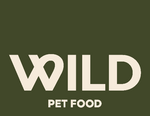DOG FOOD TRANSITION PROBLEMS?
Here's How to Fix Them
Transitioning your dog to a new food - especially one that’s more natural and nutrient-dense - can sometimes come with a few bumps along the way.
This guide covers the most common dog food transition issues and how to fix them. From slowing the switch to adding their favourite topper, you'll find practical tips to help make the change smooth and stress-free.
If you follow these tips and would like further support, you can email us at contact@wildpetfood.co.uk and one of our helpful team will support you.

"My Dog Has Stopped Eating His Food"
Why This Can Happen
It’s not uncommon for dogs to go off their food during a transition - but it’s not always about the food itself.
Stress, teething, dental issues, or even warmer weather can temporarily reduce your dog’s appetite. If your dog is used to kibble, it could be the palatants (a substance sprayed onto dog food to make it more appealing to dogs) in that food that's putting them off transition. Click here to watch a video from Ross, our founder, talking through what palatants are.
if your dog is used to raw food, it could be the aromas or change in moisture content causing them to go off their food temporarily.
If your dog is otherwise happy, playful, and has normal stools, it’s likely just a short phase.
However, if they refuse food for more than 48 hours or show signs of being unwell, it’s best to contact your vet for advice.
Things You Can Add To Help
If your dog’s a bit hesitant to eat during the transition, these simple additions can help make meals more tempting while supporting digestion:
Bone broth – adds flavour and moisture
A splash of plain, unsalted bone broth (no onion or garlic) can make meals more appealing and easier to digest.Plain, cooked pumpkin - for gentle fibre and natural sweetness
Add 1–2 teaspoons for small dogs or 2–3 tablespoons for larger dogs. Make sure it’s 100% plain pumpkin (no seasoning).Mashed sweet potato – gentle on the stomach and naturally sweet
Add a small spoonful, plain and unseasoned. This can make the food more palatable while providing extra fibre.Plain Greek yoghurt – a creamy topper with natural probiotics
Add a small dollop (around 1 tsp) for most dogs. Choose an unsweetened, xylitol-free variety. Great for gut health and taste!Warm water – softens food and releases aroma
Mixing in a little warm (not hot) water can help soften the food and enhance its natural smell, making it more enticing.
Try just one of these additions at a time to avoid overwhelming their system, and always introduce new ingredients slowly.
Our Recommendation
We recommend:
Add one simple topper at a time:
Bone broth, plain pumpkin, mashed sweet potato, plain Greek yoghurt, or warm water
These add flavour, moisture, and digestive support
Crush their favourite treats on top
A familiar scent can tempt picky eaters
Add a small amount of unseasoned scrambled egg
No oil or seasoning, and keep it to less than 10% of their meal
Rotate proteins
Some dogs prefer variety or may take better to a specific recipe
Reduce treats between meals
Too many extras can blunt their appetite for real food
Slow down the transition
If hesitation began after increasing the amount of WILD, drop back to the last successful ratio and slow the transition down further. Some dogs just need more time to adjust.
Add warm water
Mix the pellets with warm water (1:1 ratio) and let it sit for a few minutes before mixing. Adding water adds moisture into the food and releases all of the amazing natural aromas that dogs love.
Contact us if your dog has stopped eating their food - we will send you a different recipe for your dog to try.
Always monitor their response and introduce new additions slowly. If they go off food for more than 48 hours or seem unwell, speak to your vet.
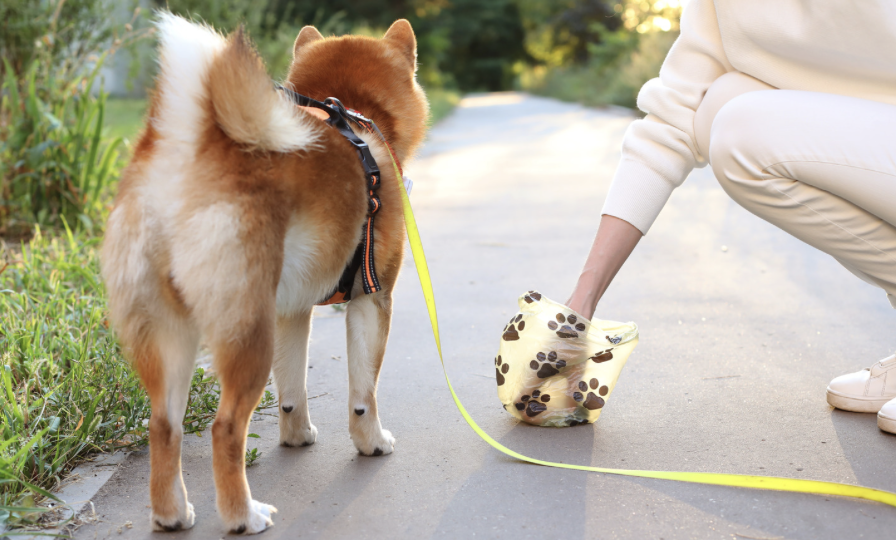
"My Dog Has Loose Stools"
Potential Reasoning
If your dog has loose stools during the transition to WILD, it’s usually nothing to worry about - and often comes down to the nutrient density of our food. WILD is a dehydrated 80:20 formulation that's cold-pressed, which means it’s much more concentrated than standard dry food.
This can be a big change for your dog’s digestive system - especially if they’re coming from a lower-protein kibble or high-moisture diet. Their gut may need a bit more time to adjust, which can sometimes show up as soft or loose stools.
Digestive Aids
If your dog’s experiencing loose stools during the transition, these gentle additions can help support their digestion:
Plain, cooked pumpkin – for added fibre
Add 1–2 teaspoons for small dogs or 2–3 tablespoons for larger dogs per meal. Make sure it’s 100% plain pumpkin with no seasoning.Cooked sweet potato – for added fibre and gut support
Add a small spoonful, mashed and cooled. Avoid any added butter, oil, or seasoning.A digestive-supporting probiotic – to help balance the gut microbiome
Choose a dog-specific probiotic, and follow the brand’s dosage instructions carefully.
These additions can be mixed into their food during the transition to help firm things up and support their digestive system as it adjusts. Always introduce new ingredients slowly and monitor your dog’s response.
Our Advice
We recommend:
Add just one digestive aid at a time
Choose either pumpkin, sweet potato, or a probiotic - not all at once. Introduce it gradually and give it a few days to see how your dog responds before trying a different option. This helps you identify what’s actually helping without overwhelming their system.
Reduce the amount of food you’re feeding
WILD is highly concentrated, so your dog likely needs less than you're used to feeding. Even a small reduction can make a big difference.Go back to the last ratio that didn’t cause issues
If loose stools began after increasing the amount of WILD, drop back to the last successful ratio and slow the transition down further. Some dogs just need more time to adjust.Keep them hydrated
Always ensure fresh water is available - hydration helps support digestion, especially during dietary changes.
Most mild digestive issues resolve with these small adjustments. However, if your dog’s symptoms are extreme, prolonged, or you're ever concerned, we always recommend speaking to your vet for tailored support.

"My Dog Has Flatulence Issues"
Possible Explanation
Some gassiness is normal when switching to WILD.
Our food has a high meat content and no fillers like grains, legumes, or additives - so it can take time for your dog’s digestive system to adjust.
This shift may temporarily disrupt their gut microbiome, leading to more gas.
Flatulence is also more common if the transition is too fast, as a sudden change can overwhelm the gut.
Aids That Could Help
If your dog is a bit gassy during the transition, we can help! Here are a few gentle additions that can help support digestion and reduce flatulence:
A digestive-supporting probiotic – to help balance the gut microbiome
Choose a dog-specific probiotic and follow the recommended dosage.
Plain, cooked pumpkin – for added fibre
Add 1–2 teaspoons for small dogs or 2–3 tablespoons for larger dogs per meal. Make sure it’s 100% plain pumpkin (no seasoning).
Fresh parsley leaves (finely chopped) – to support digestion and reduce odour
Mix a small pinch of fresh curly-leaf parsley into their food. Avoid Italian flat-leaf parsley.
Not suitable for pregnant dogs or those with kidney issues, as parsley has natural diuretic properties.
Add moisture to meals – helps ease digestion and reduce gassiness
Mix in a splash of warm water or a little bone broth (no onion or garlic) to help the food digest more gently.
Try just one of these aids at a time so you can see what works best for your dog, and always introduce new ingredients gradually.
Our Top Tips
Here are our top tips to help ease flatulence:
Add one digestive aid at a time
Plain, cooked pumpkin - for added fibre
Fresh parsley (small pinch, curly-leaf only) - supports digestion and odour control (not suitable for pregnant dogs or those with kidney issues)
A dog-specific probiotic - helps balance the gut microbiome
Add moisture to meals - a splash of warm water or bone broth (no onion/garlic) can aid digestion
Slow down mealtimes
Use a slow feeder bowl or scatter feed to reduce swallowed air during eating.Feed smaller, more frequent meals
Breaking meals into two or three smaller portions can reduce digestive strain.Take a short walk after meals
Gentle movement can help stimulate digestion and reduce trapped gas.
Wind back the transition
If flatulence issues began after increasing the amount of WILD, drop back to the last successful ratio and slow the transition down further. Some dogs just need more time to adjust.
Introducing one change at a time helps you see what’s working. If flatulence is severe or doesn’t settle after the transition period, feel free to reach out - or consult your vet for tailored support.
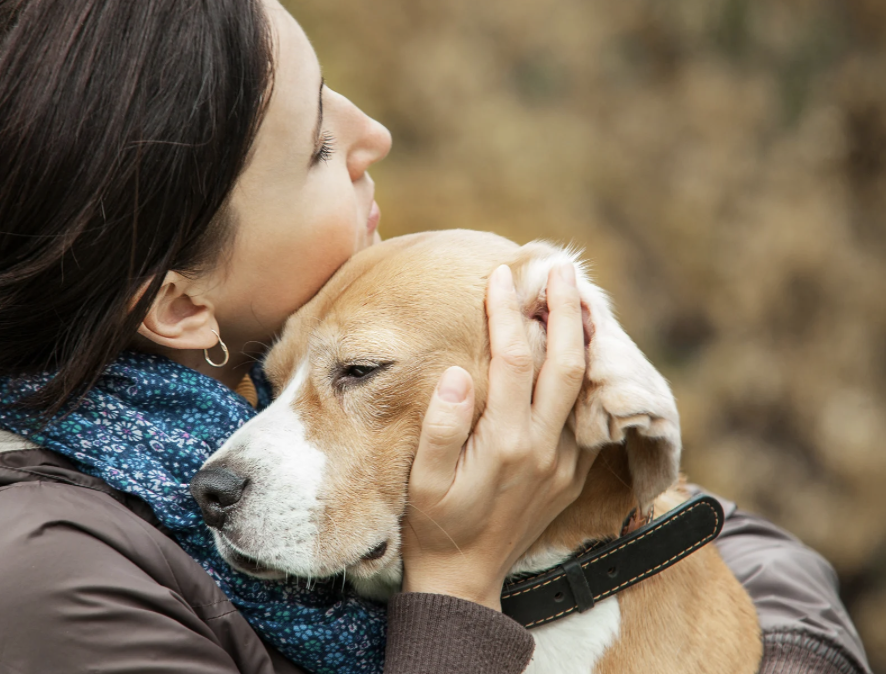
"My Dog Has Vomited"
Potential Cause
Mild vomiting during a food transition can happen because your dog’s digestive system is adjusting to new ingredients, textures, and nutrient levels.
Their gut microbiome - the balance of bacteria that helps break down food - is used to their old diet. When it suddenly changes, the body can respond with a bit of digestive upset.
Vomiting may also happen if your dog eats too quickly, overindulges, or struggles with a richer recipe. It’s usually nothing to worry about, but it’s a sign to slow things down and give their tummy a little more time to adjust.
Helpful Add-Ins
There are a few gentle, natural add-ins that can help soothe the digestive system and make the switch easier.
Bone broth – adds flavour and moisture
A splash of plain, unsalted bone broth (no onion or garlic) can make meals more appealing and easier to digest.Plain, cooked pumpkin - for gentle fibre and natural sweetness
Add 1–2 teaspoons for small dogs or 2–3 tablespoons for larger dogs. Make sure it’s 100% plain pumpkin (no seasoning).Dog-specific probiotics or paste – supports healthy gut bacteria and aids digestion during change
Follow packaging instructions - often 1 dose per day based on weight.Fresh grated ginger (tiny amount) – natural anti-nausea properties, great for settling the stomach
A small pinch mixed into food (no more than once a day).
These remedies are safe for most dogs, but if vomiting continues, gets worse, or comes with other symptoms (like lethargy or diarrhoea), it’s best to check in with your vet. Always introduce new add-ins gradually and monitor how your dog responds.
Our Advice
We recommend:
Add one simple topper at a time:
Bone broth, plain pumpkin, probiotic/paste, or fresh grated ginger
These add flavour, moisture, and digestive support
Slow the transition right down
Go back a step in the ratio of old vs. new food to let their digestive system catch up. For example, if you're feeding 50/50, drop back to 75/25 for a few days.
Keep portions small and consistent
Less is more here - small, regular meals with one added digestive aid is better than overloading their bowl.
Stay calm and consistent
Often, a little time and patience is all it takes for things to settle. Monitor their energy, appetite and stool quality - if they're otherwise happy, you're on the right track.
Still not sure? Or vomiting hasn't improved after a few days? It's always safest to check in with your vet, just to rule out any underlying issues.
Experiencing some challenges are a completely normal part of the transition process and can take up to 30 days to normalise.
If you would like some personalised support or just want to chat about your dog's food journey, reach out to us at contact@wildpetfood.co.uk quoting your order number and our helpful team will support you.
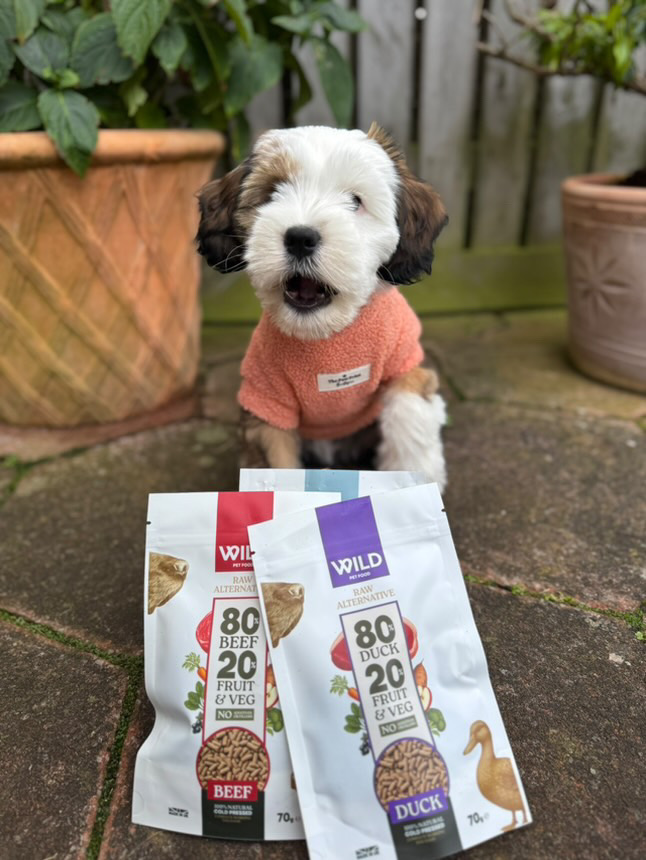
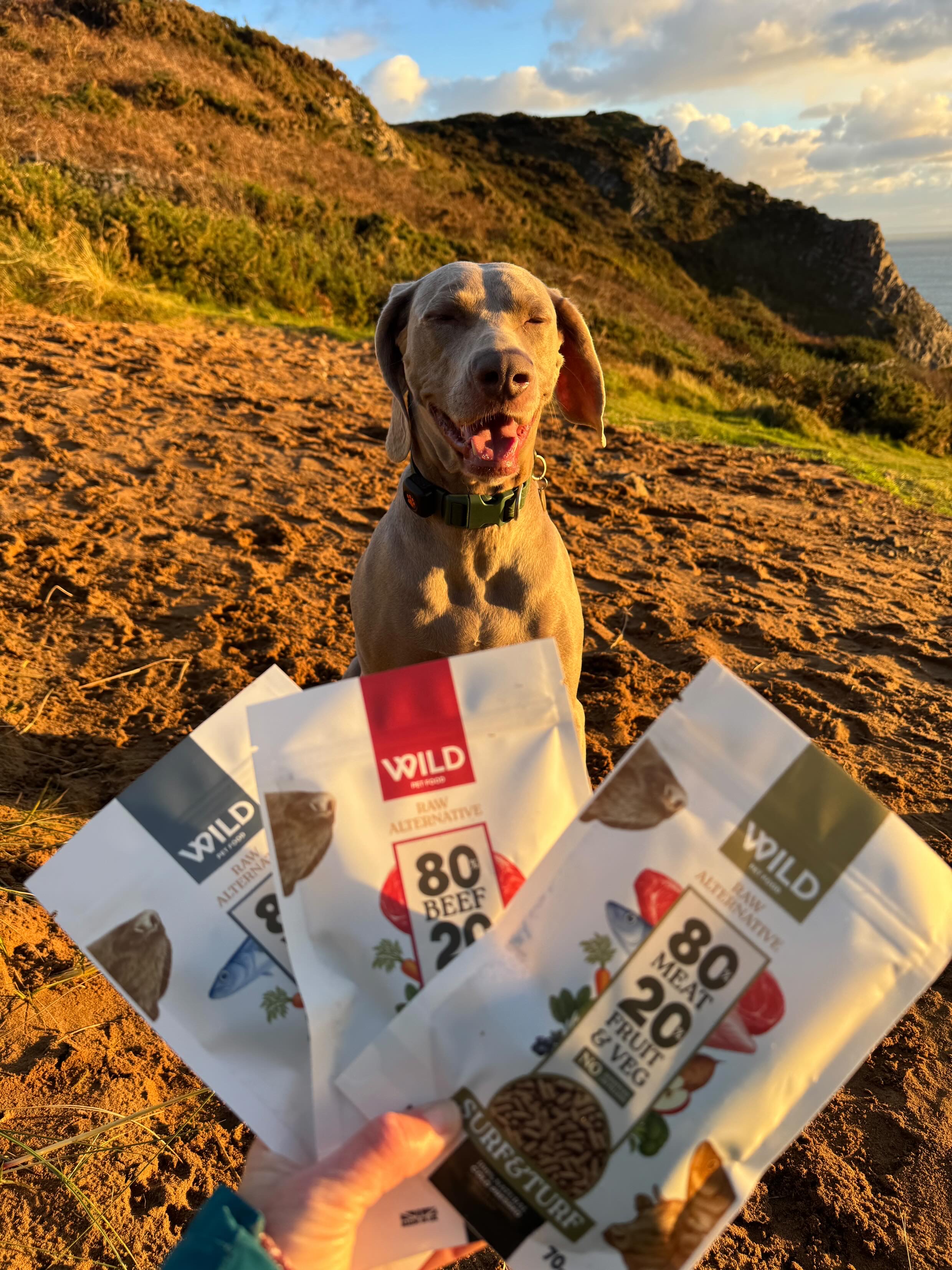
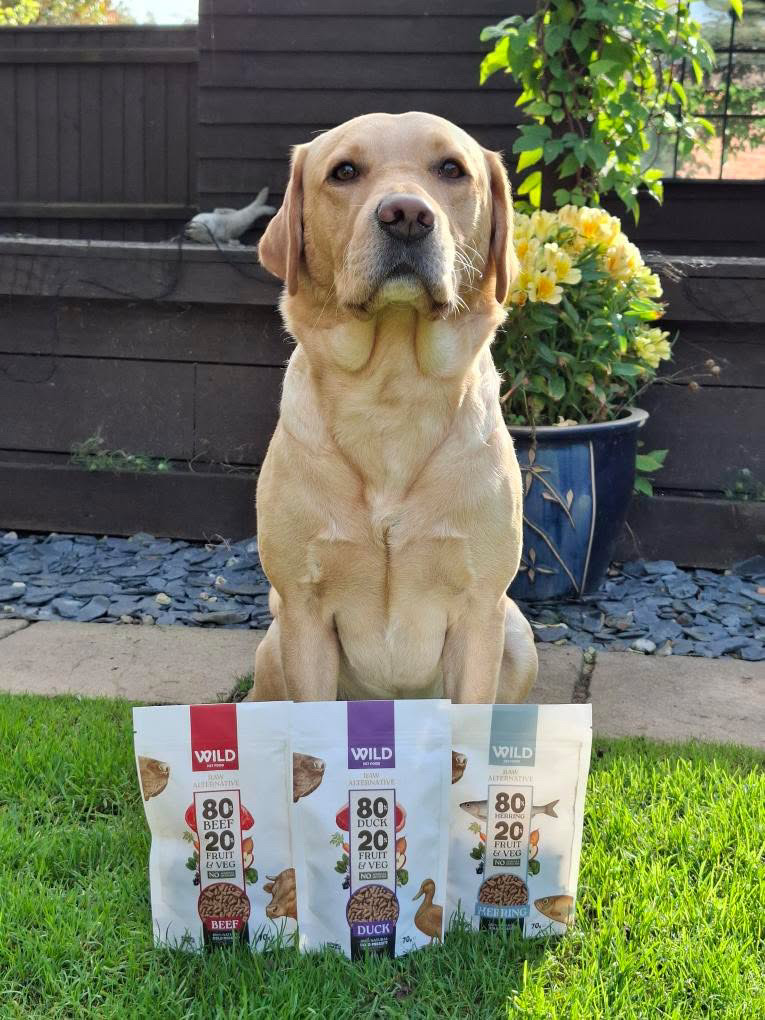
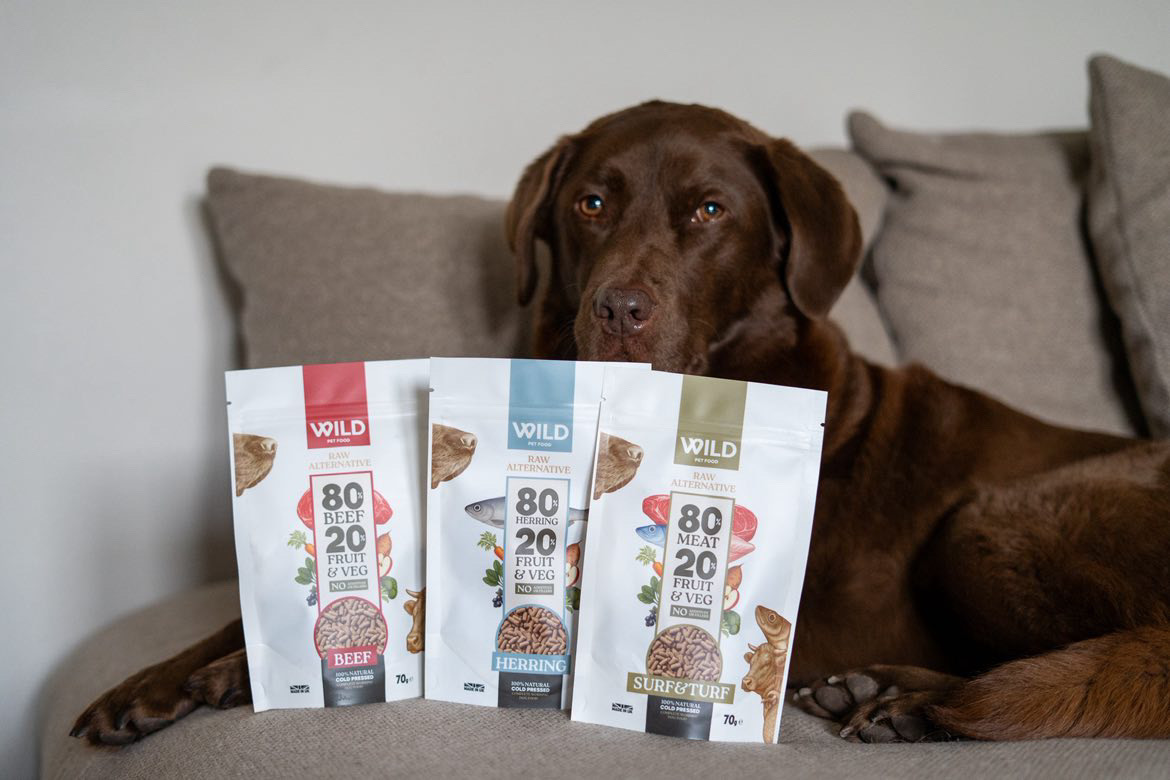
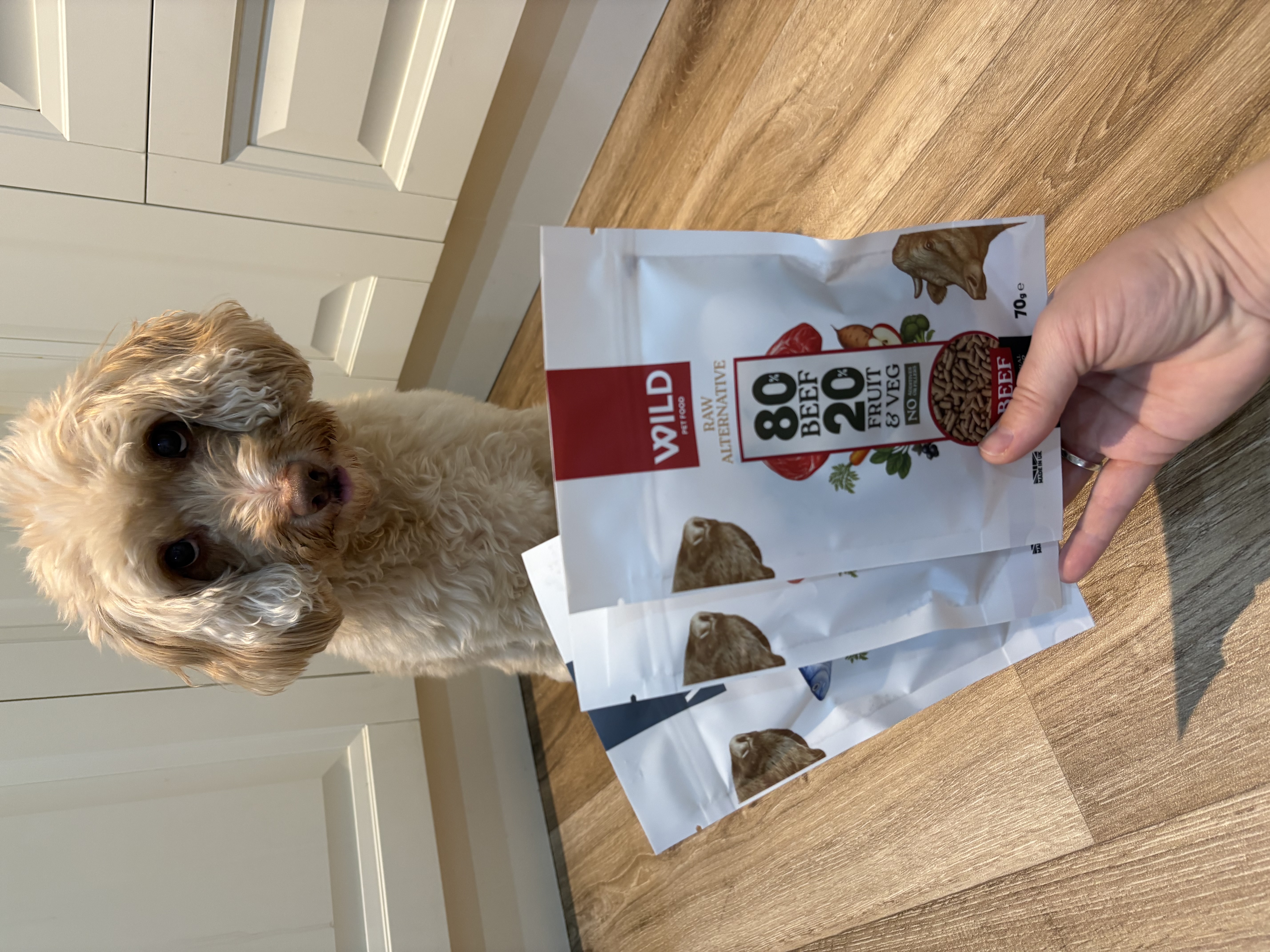
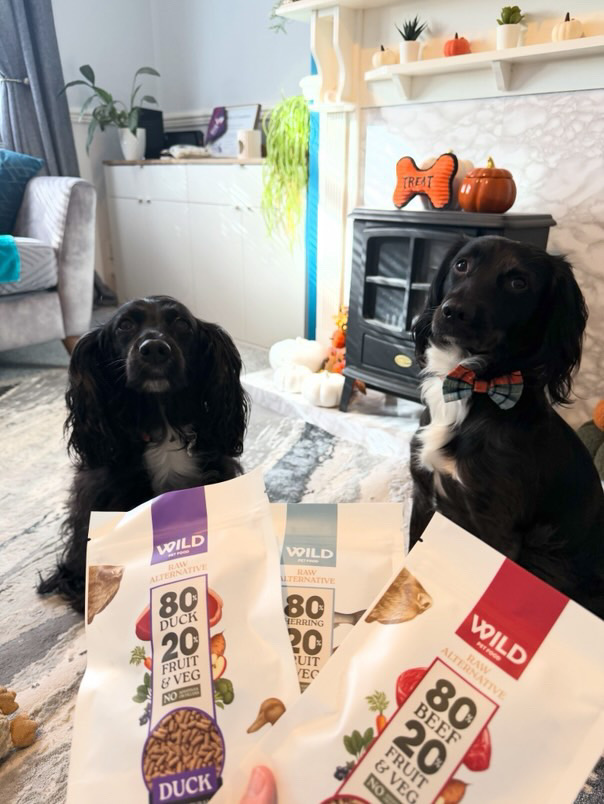

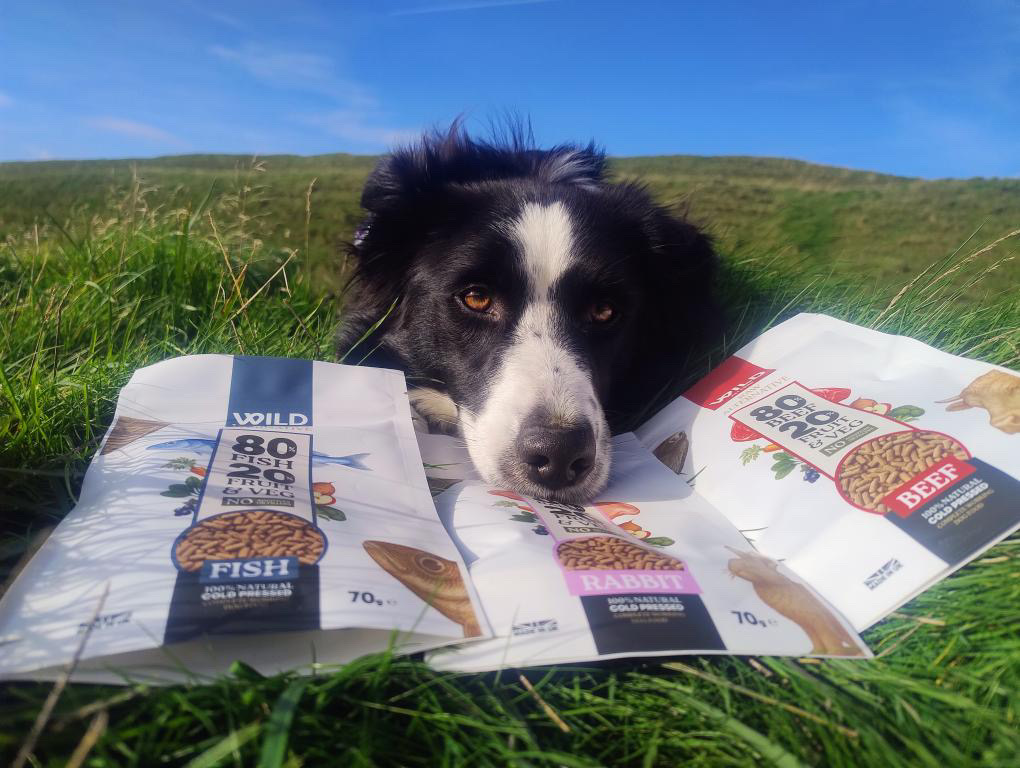
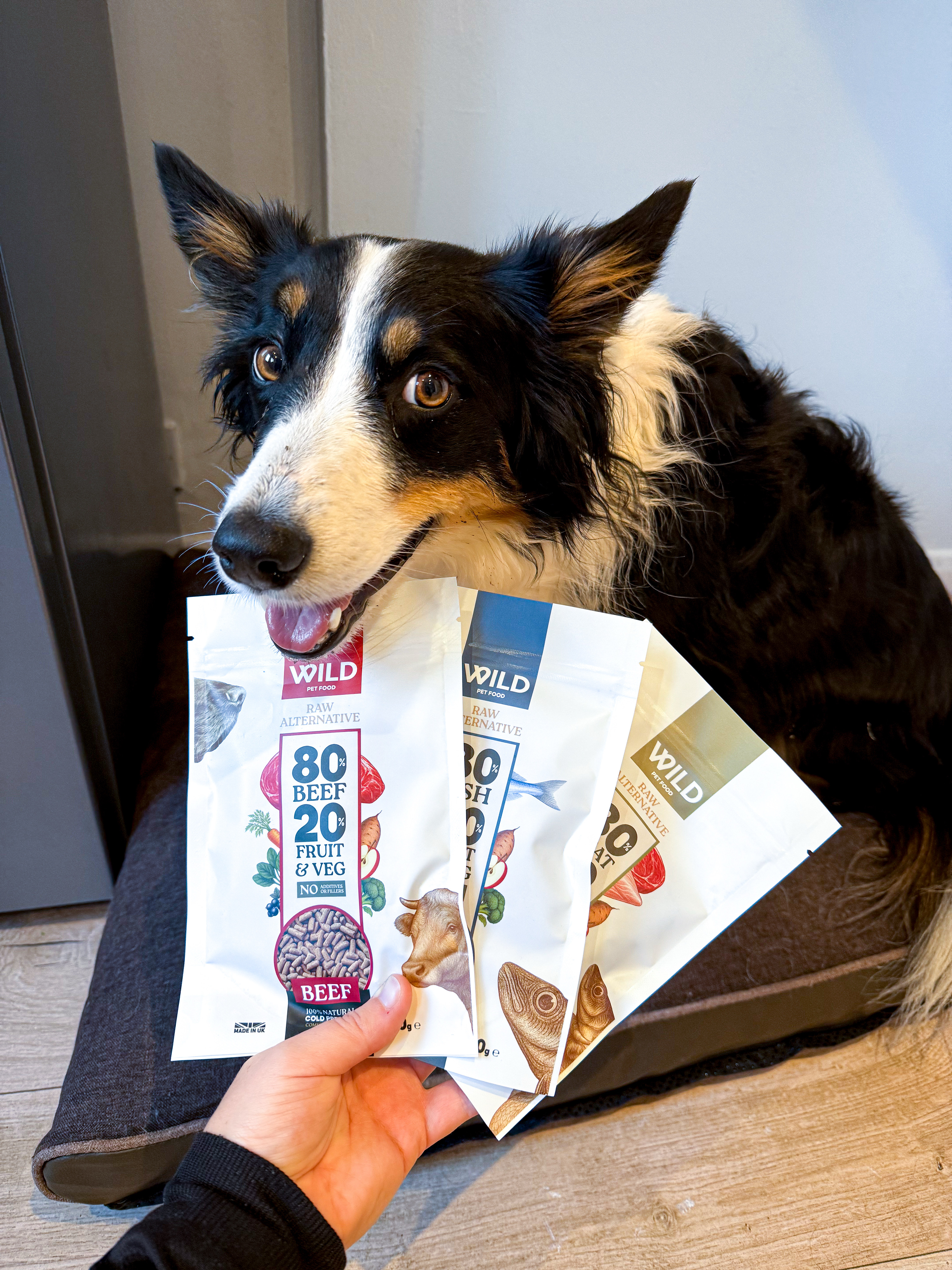
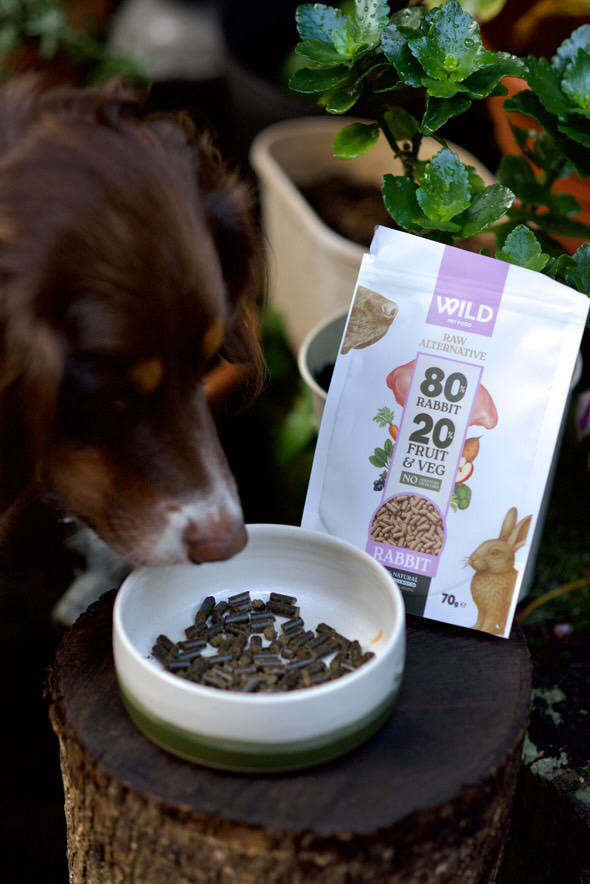
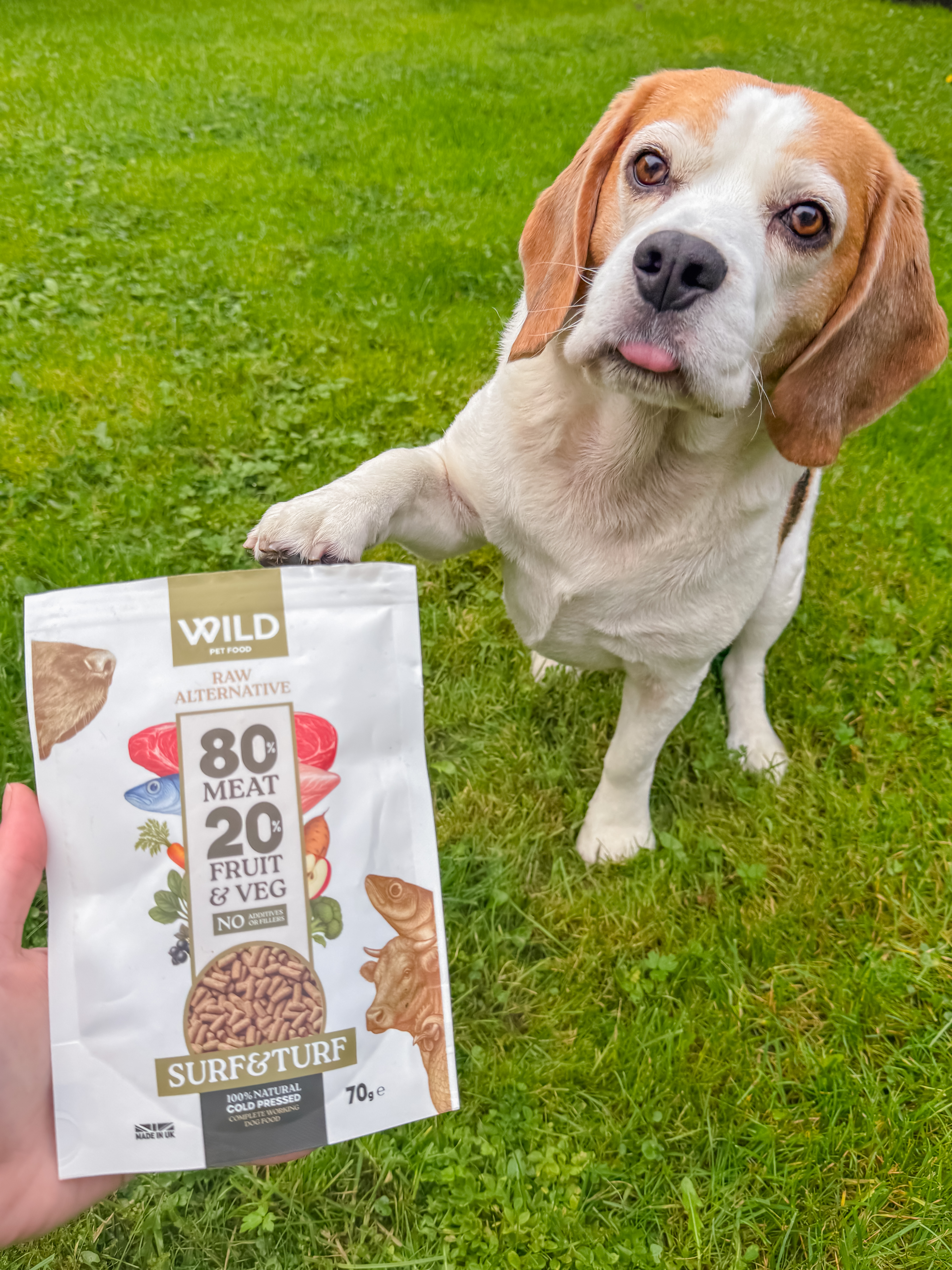
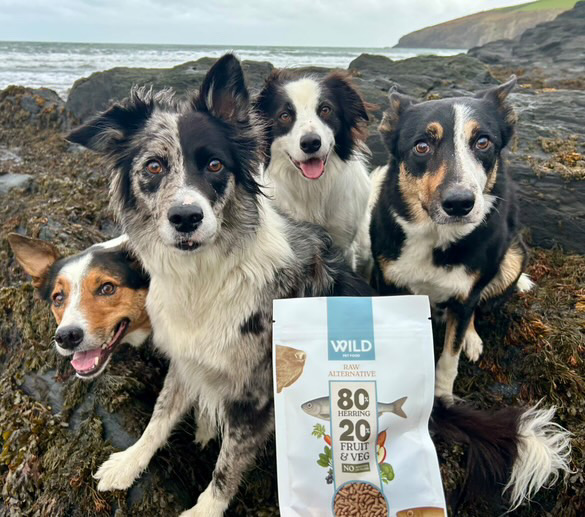




































































































































































































































Need a more accessible version? Email us at contact@wildpetfood.co.uk for a format tailored to your needs!
